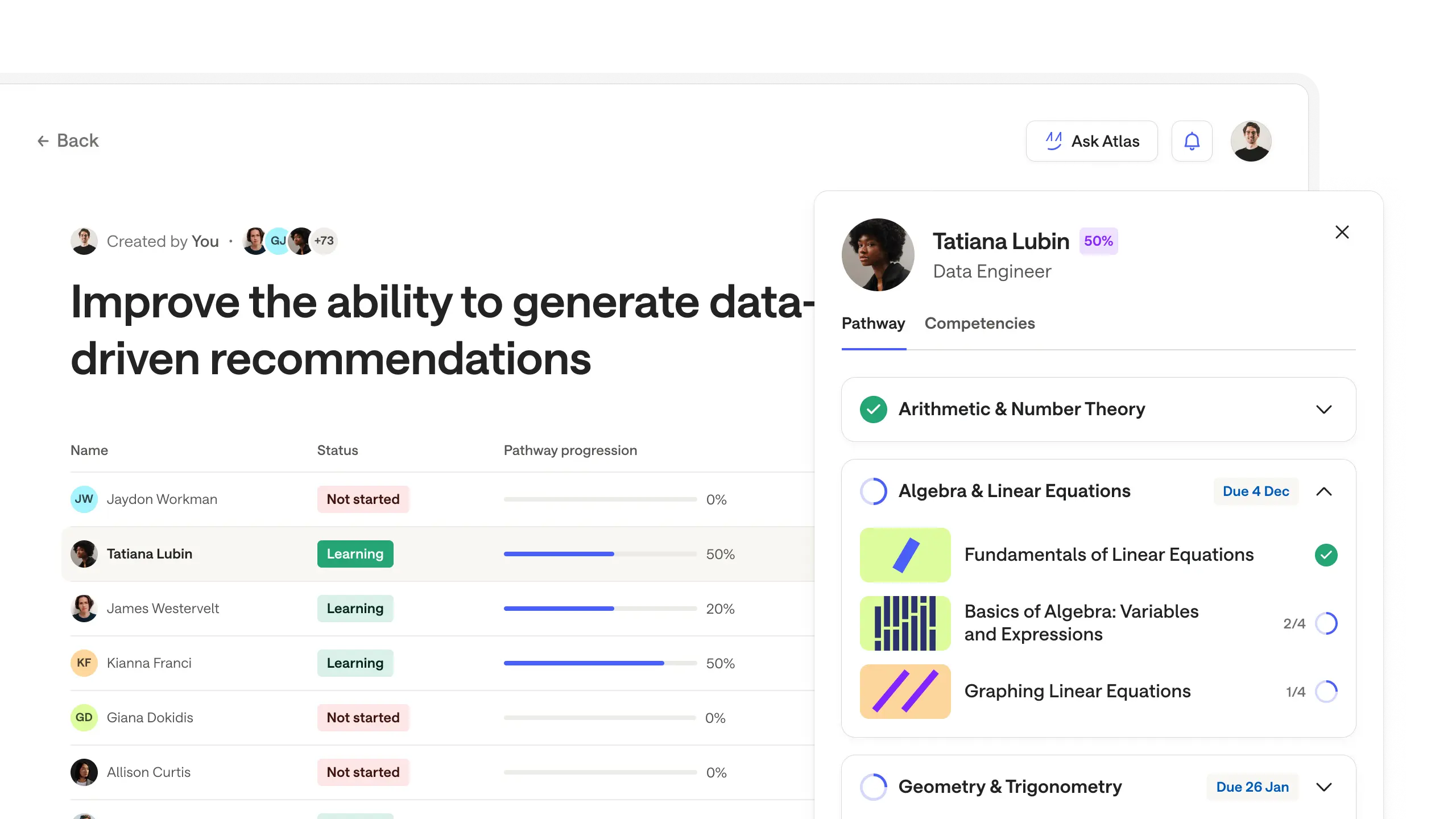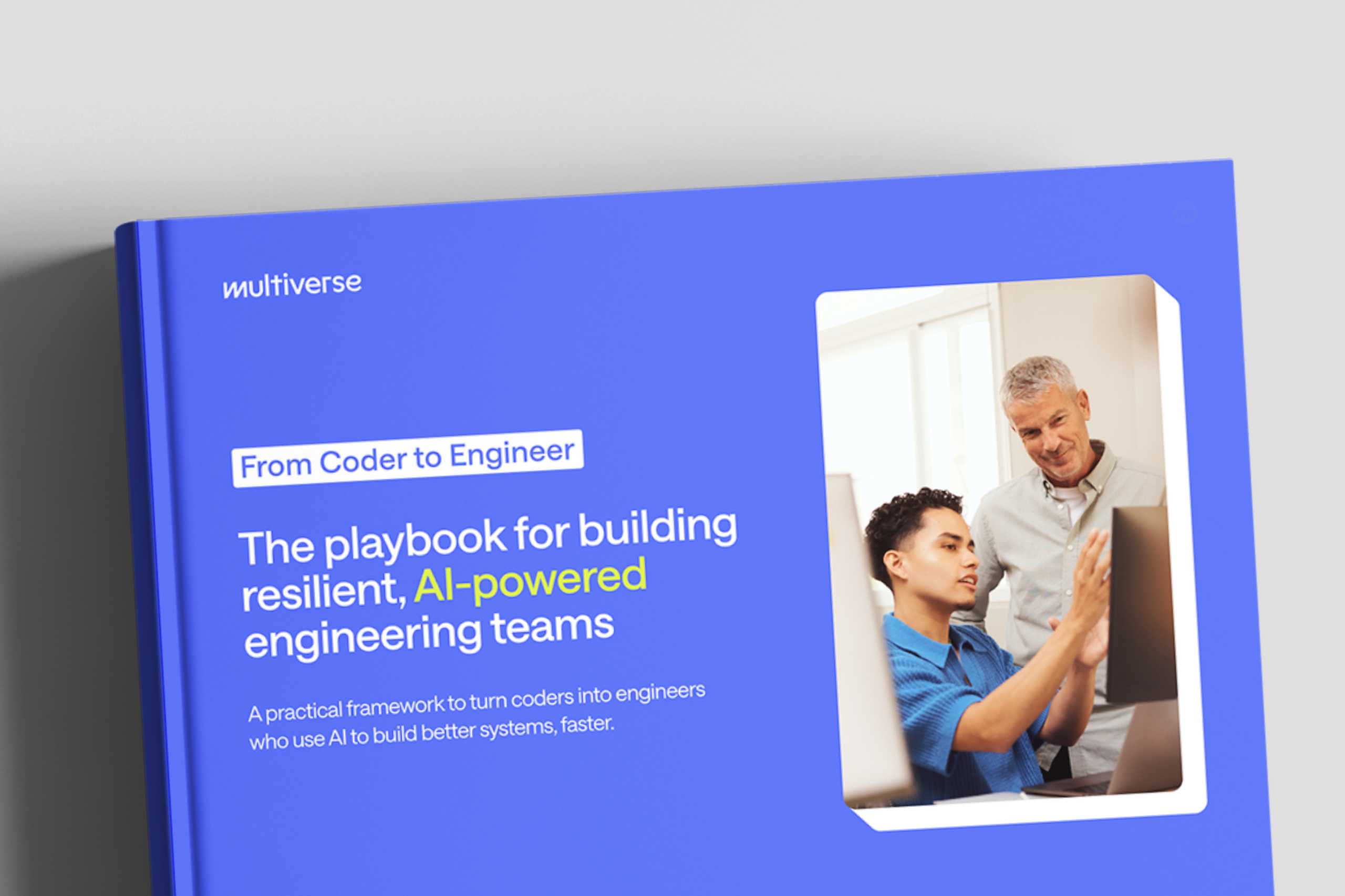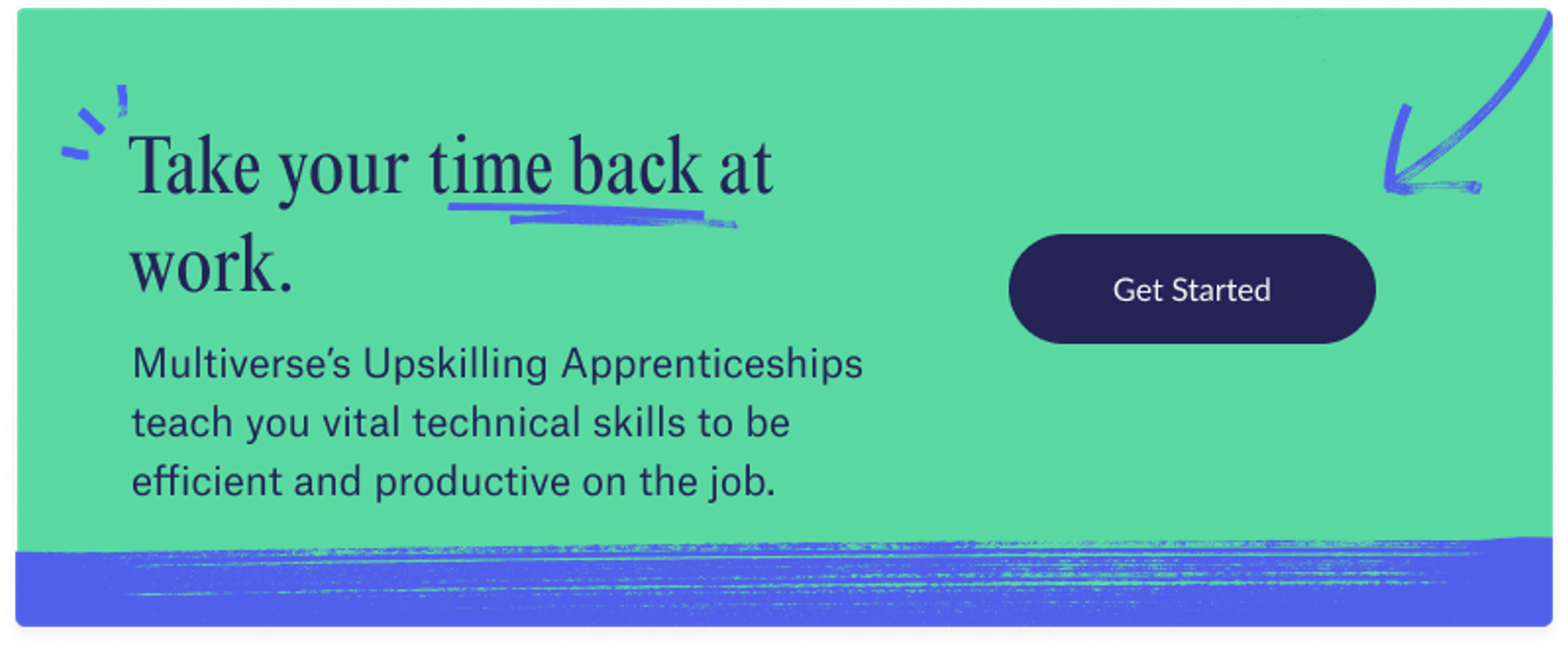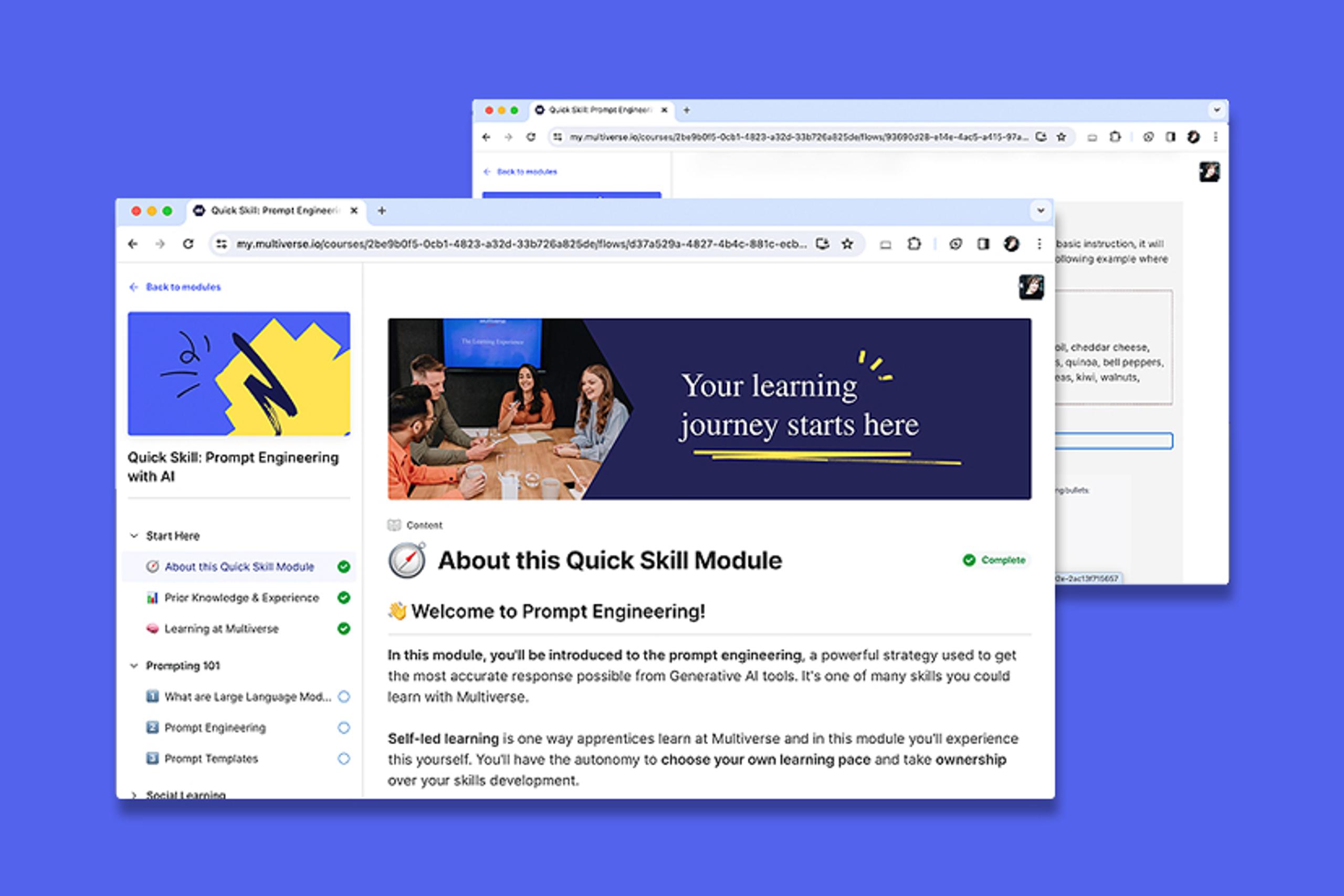Business data analytics is a cornerstone of modern decision making and innovation.
Companies use the insights they gain from business analytics to create data-driven strategies. These approaches can improve customer satisfaction, operational efficiency, and profitability. Retailers, for example, can use data analytics to predict which products will sell fastest and optimise its supply chain management.
The people who wrangle data to create strategies are Business Data Analysts. Business Data Analysts and professionals with similar titles help companies make sense of data and apply insights strategically. This career path often appeals to people who enjoy solving problems and crunching numbers. But is it the right path for you? Below, we break down everything you need to know about becoming a Business Data Analyst, including responsibilities, skills, and salary. Let’s dive in.
What is business data analytics?
Business data analytics uses software and statistical techniques to interpret data and gain meaningful insights. This process allows organisations to understand their operations better and improve performance. Business analytics also assists with strategic planning and risk management.
Say, for example, a national restaurant brand wants to update its menu. Data analytics allows the company to interpret customer reviews and sales trends to determine which meals and ingredients perform best. Based on these insights, the restaurant can tailor its menu to satisfy customers and boost sales.
Understanding business data analysis
You may have already started to master some of the components of business data analytics. This process involves a few basic steps:
- Ask a question - Start with a specific question or concern you want to address with data. For instance, you could explore customer trends to discover why your business's sales have declined.
- Data collection - Identify relevant data sources and gather information. You could survey customers or use data mining techniques to harvest social media posts.
- Data cleaning and processing - Organise the raw data into a usable format. This often involves transforming data by loading it into an environment optimised for analysis. You’ll also fill in missing data, remove inconsistencies, and correct errors.
- Data analysis - Apply statistical techniques and software to reveal patterns and correlations in the data set.
- Data visualisation - Use software to transform the data into easy-to-understand graphics. These visualisations may include charts, graphs, and maps.
- Data interpretation - Study the results to extract meaningful insights. For instance, you might determine your target audience’s interests have changed, leading to a sales dip.
- Communicate findings - Share your results with decision makers and recommend the next steps. In this scenario, you might advise developing new services that better align with your consumer base.
Real-world applications of business data analytics
Business data analytics has many practical applications across industries. Here are three case studies that illustrate the value and versatility of this approach.
Tracking Machine Health in Manufacturing
The manufacturer John Deere(opens new window) uses data analytics to improve its customer service and repair machines more effectively.
The company instals advanced telematics software in its construction machinery. The software collects data about different aspects of machine behaviour, including fault codes, fuel consumption, and idle time. This data gets streamed through the cloud to John Deere’s Machine Health Center in Iowa.
Local dealers use this data to diagnose machine problems remotely instead of travelling to construction sites or farms. They can select the necessary parts and repair tools to bring to the service appointment, saving time and reducing trips. Additionally, John Deere uses this information to identify and fix potential manufacturing errors.
These applications allow John Deere to improve its performance over time and provide more efficient service.
Improving patient care in healthcare
Data analytics allows Stanford Medicine Children’s Health(opens new window) to understand and improve the patient experience.
The organisation uses evaluation forms to collect data about patients’ experiences during their hospital stays. Analysts use AI tools to synthesise the information and reveal patterns, such as complaints about staff responsiveness and wait times.
According to Chief Analytics Officer Brendan Watkins, the organisation places these insights “directly into the hands of the folks who can make a difference, make systemic change with this data.” These stakeholders include healthcare providers who can use the information to deliver better patient care.
Boosting productivity in retail
The American grocery chain Kroger(opens new window) has developed two data-driven applications to improve employee productivity.
First, the company created a task management application for Night Crew Managers. This application displays each store’s inventory and merchandise deliveries in real time. It also uses data analytics to optimise employee to-do lists to help them restock stores efficiently.
Additionally, Kroger uses a store management application to streamline store audits. This tool also automatically recommends tasks for employees as they prepare for audits.
Both applications help Kroger associates adapt to changing store conditions and improve the customer experience.
The role of a Business Data Analyst
A Business Data Analyst uses data to solve business problems and identify growth opportunities. They also support decision makers by offering recommendations based on their findings.
The day-to-day responsibilities of these professionals vary by role but typically include these tasks:
- Collect data from a wide range of sources, such as customer feedback forms, financial records, or in-product data from a software application
- Develop databases to organise information
- Process raw data to prepare it for analysis
- Build and train machine learning (ML) models to analyse enormous data sets
- Design predictive models to forecast potential outcomes
- Create data visualisations
- Deliver presentations about their findings
- Collaborate with colleagues in marketing, sales, and other departments
- Learn about the latest advancements and trends in business data analytics
Business Data Analysts wield significant influence in their organisations. Leaders rely on their expertise for a broad range of business decisions, such as:
- Choosing marketing and sales tactics
- Deciding whether to invest in a new venture
- Managing financial resources
- Selecting prototypes to develop into new products
- Scheduling manufacturing equipment for maintenance and replacement
Because Business Data Analysts deliver considerable value, they can earn relatively competitive salaries. According to Glassdoor, the median salary for this career is £38800 per year in the United Kingdom.
Essential skills for Business Data Analysts
You’ll need the right technical and soft skills to thrive in a business data analytics role. If you’re interested in this career path, focus on developing these foundational abilities.
Technical skills
Business Data Analysts rely heavily on technology to interpret data. After all, you wouldn’t get very far if you had to analyse a spreadsheet with thousands of data points by hand. These technical skills will help you manage and process data effectively:
- Structured Query Language (SQL) - This language allows you to organise, manipulate, and search structured databases.
- Programming languages - Use R for exploratory data analysis and data visualisation. Python enables you to automate tasks, clean data, and build ML algorithms.
- Statistical analysis - Understand how to use statistical methods to interpret data. For example, descriptive analytics evaluates historical data to understand events and patterns. Prescriptive analytics uses past and present data to recommend future actions.
- Artificial intelligence (AI) and ML - Companies increasingly rely on AI and ML to analyse data and predict future trends. Study foundational ML concepts like clustering algorithms, decision trees, and linear regression. You should also know how to use ML frameworks and libraries like PyTorch and TensorFlow.
- Data visualisation - Transform data into accessible and visually appealing graphics. Popular data visualisation platforms include Microsoft Power BI, Tableau, and Zoho Analytics.
- Reporting - Use business intelligence tools like Qlikview and Sisense to create interactive dashboards and reports for stakeholders.
Soft skills
Data Analysts need strong interpersonal skills to excel in the workplace, including:
- Adaptability - Business analytics evolves quickly, so prepare to embrace new approaches and tools.
- Collaboration - Share ideas and responsibilities with team members from different backgrounds and departments.
- Communication - Express your ideas clearly in conversations, presentations, and written reports. You should also learn to translate complex technical concepts for lay audiences.
- Critical thinking - Evaluate the accuracy of data, identify potential biases in the results, and assess potential recommendations for feasibility.
- Negotiation - Collaborate with multiple stakeholders to develop solutions that meet everyone’s needs.
- Problem-solving - Learn how to approach problems from different angles and devise novel solutions.
Steps to becoming a Business Data Analyst
There’s no universal blueprint to becoming a Business Data Analyst. You can use many resources and strategies to gain the knowledge and skills required for this career. Here are a few common pathways.
Study at university
A university education is a traditional — but not required — educational pathway for Business Analysts. Many colleges and universities offer degrees in business analysis, data science, mathematics, and other relevant fields.
Enrolling in a business data analytics program offers several benefits. A structured curriculum gives you a solid foundation in data management, statistical analysis, and other necessary skills. You’ll also receive feedback and guidance from faculty.
But a university education has a few drawbacks. First, a three-year degree requires a significant investment of time and money. In England and Wales, full-time students pay £9,250 on average annually(opens new window) for tuition, books, and other expenses, according to the BBC. You’ll also need to dedicate extensive time to studying and attending classes. People with full-time jobs, families, and other obligations may struggle to balance their responsibilities with a college education.
Many universities also provide limited hands-on experience. A student reading business data analytics may learn foundational theories but not be able to apply these concepts in the real world. As a result, they may lack the experience and portfolio needed to land a position.
Obtain relevant certifications
Certifications enable you to develop your skills and showcase your abilities to potential employers. Here are a few relevant credentials that could help you prepare for data analytics roles:
- Entry Certificate in Business Analytics (ECBA) - The International Institute of Business Analysis(opens new window) offers this certificate for aspiring and entry-level data professionals. The certification demonstrates foundational competencies in business analysis planning, elicitation and collaboration, and other areas.
- Professional in Business Analysis (PMI-PBA) - The Project Management Institute(opens new window) designed this certification for Business Analysts who use data to support projects.
- Certified Foundation Level Business Analyst - The International Qualification Board for Business Analysis(opens new window) offers this foundational certification. It demonstrates proficiency in business modelling and creating business solutions.
Certifications cost much less than the average four-year degree and typically take less than a year to earn. They can accelerate your professional development and prove your commitment to the field to potential employers.
Upskilling
If you’re an established professional, you may already have many skills needed to succeed in business analytics. But everyone has areas for improvement. Thankfully, upskilling can fill any gaps in your knowledge — making you more productive at work and better prepared to advance in your career.
In fact, according to Gartner, 75% of employees who participate in upskilling programs agree it contributes to career progression.
Multiverse’s Advanced Data Fellowship is one of the most effective ways to level up your skills. This free program allows you to immerse yourself in the field of business analytics — all while working for your current employer.
The apprenticeship includes 23 immersive modules that teach you how to make data driven decisions and improve business processes. You’ll also learn data analysis and visualisation skills you can immediately apply in. This fusion of structured learning and hands-on experience will help you grow your career in business analysis.
Gain hands-on experience
Developing practical experience strengthens your skills and gives you a competitive advantage in the job market. Look for opportunities to apply your skills with real data sets.
For example, you could volunteer to analyse customer data for your current employer and recommend ways to improve marketing initiatives. You could also help clients solve business problems as a freelancer or consultant.
As you create projects, assemble them into a digital portfolio. Include a detailed description of each project and highlight their measurable outcomes. Potential employers can review your portfolio to gauge your experience level and skills.
If you’re looking for hand-on projects, Multiverse’s Applied Analytics Accelerator equips you to upskill your data chops while staying in your current role.
Take the next step in your data analytics journey with Multiverse
As a Business Analyst, you play a critical role in business decision making and strategic planning. Your insights can help companies develop cutting-edge innovations, improve customer experiences, reduce costs, and more.
Prepare for a career in this in-demand field with a Multiverse apprenticeship. Apprentices get paid to upskill and gain hands-on experience with real business analytics projects. They also receive one-on-one tailored to their goals.
Tell us about yourself by completing our quick application(opens new window), and the Multiverse team will get in touch with the next steps.











